TOO Much Quality? 10 Signs You Are Overpaying For Your Suit
September 19, 2019DMT.NEWS#DMTBeautySpot #beauty
Men's suits – there have been entire books written on the topic. I've published countless articles on them. They are the core of a man's professional appearance.
Today though, I wanted to touch upon something different and ask the fundamental question: Is there such a thing as too much quality?
There is if you have a budget. There are many technical factors in a suit that showcase great craftsmanship and make it more durable.
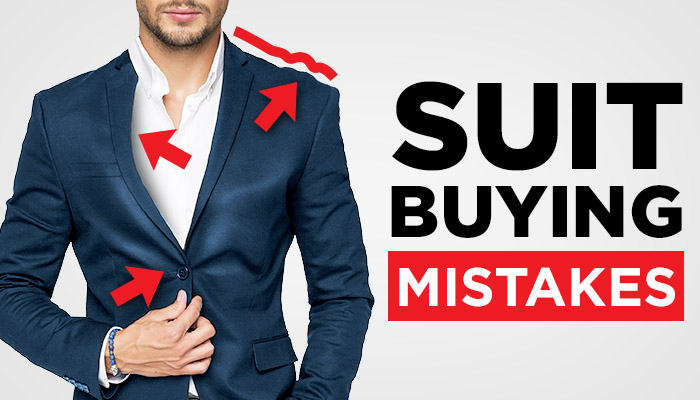
However, if you try and get ahold of all of them, you may be spending way more than you bargained for. That's the topic of today's article, gents: 10 signs that you're overpaying for men's suits.
This article was brought to you by Spier And Mackay – The best online tailors I know. Their goal is to deliver exceptional value and a great experience to customers. Their suits start at just $328!
It doesn't just stop there, though – they sell everything from suits, to sweaters and trousers. These guys use Italian and English cloth from only the best mills they can find. Want to learn more? Click here to check out Spier And Mackay.
Click Here To Watch The Video – 10 Warning Signs You're Overpaying For A Suit
- Knowing Quality Vs. Luxury.
- Bespoke Suits.
- High-Quality Additions.
- Knowledgeable Salespeople.
- The Double Vent.
- Double-breasted Jackets.
- Waistcoat Options.
- Silk Lining.
- Half-Canvas Vs. Full-Canvas.
- Excess Material.
1. Knowing Quality Vs. Luxury
Believe it or not, there is a difference when it comes to men's suits. Quality is tangible and measurable – it can be determined by comparing one material to another and making a decision based on hard facts.
Luxury, however, is an abstract concept. It only exists in the mind of the customer looking to buy. The notion of luxury is based entirely on brand recognition. If a brand markets itself as a luxury name, and you believe it, then boom – you've fallen for it.
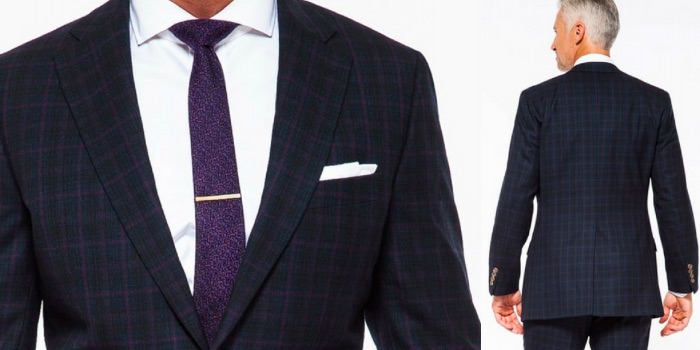
Brand names should be a secondary concern.
A luxury brand can offer quality (they often do), but you'd be paying for much more than what you can feel and touch. When it comes to shopping, be mindful of the materials used in construction – prioritize that over the name on the tag.
2. The Difference Between Bespoke, Custom, And Off-The-Rack
When you're shopping for a men's suit, it's important to know what you're in the market for. The difference between bespoke, custom suits and off-the-rack menswear has a significant impact on price.

A bespoke suit is going to cost you a pretty penny. It's like investing in art.
Let's go through them briefly.
- Bespoke: These are absolutely unique garments that are assembled from scratch. Every bespoke suit is unique and viewed as a work of art. Be prepared to pay the big bucks for it.
- Custom: Men's suits that are custom can be good, but they can also be bad. It essentially means that parts of the suit are pieced together to fit you, but that isn't always a guarantee of quality – nevertheless, there are gems to be found here.
- Off-the-rack: It means just that – that you got it off the rack and threw it on. This is the generally less expensive option, but it is the target of many luxury brands. You can find good quality and pricing here all the same.
3. High-Quality Additions That Drive Up Prices
There's a lot that goes into a suit that can affect the cost. There are several impressive accouterments a suit can take on, but that can also drastically increase its price.
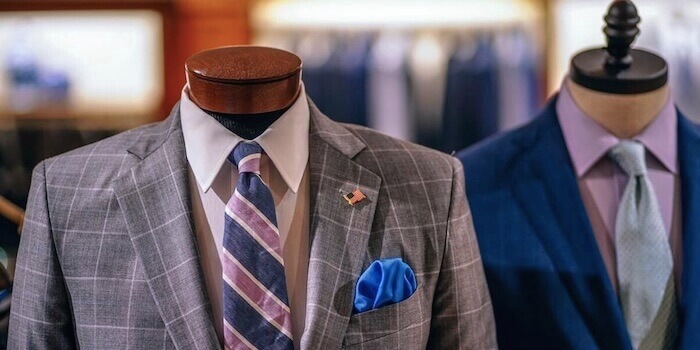
Certain exquisite details can jack the price up on suits. They can be fantastic, but shouldn't be your priority.
- Horn Buttons: True to the name – they are buttons made from animal horn. It's a great touch, but one you can probably live without on your first suit.
- Surgeon Cuffs: Simply put, these are functional buttons at the end of a suit's jacket sleeve. They originated from Victorian England when doctors rolled up their coat sleeves to help patients.
- Hand-sewn Pick Stitching: A continuous thread stitched into the jacket along the edge of the lapel. While it does showcase the skill of the tailor and the overall quality of the suit, it might be too steep for a man even on his third suit.
It's important to stress that these are all great details that only add to a suit's overall quality. I only recommend holding off on them for your first three suits.
4. Knowledgeable Salespeople
When you find the right salesman to help you, it can be a very pleasant experience. They can point you in the right direction and decisively assess your needs.
But there is a caveat.
At the end of the day, their job is to sell you a suit. A classic sales strategy is to point you toward the most expensive and luxurious garments first.
That's not to say they're somehow evil for doing this – on the contrary, they're just doing their jobs and pointing you to the best quality available. Be wary of your own budget, and put your foot down politely if necessary.
5. You're Considering a Double Vent
Along the bottom of most men's suit jackets, you'll see a variation of a vent. Vents are slits on the back of the coat – usually as single or double cuts.
Single vents are prevalent in off-the-rack sales. They were originally meant for American horsemen, so both sides of the jacket could fall across the horse. Though it does require more labor to make a vent, the single vent is often less expensive than the alternative.
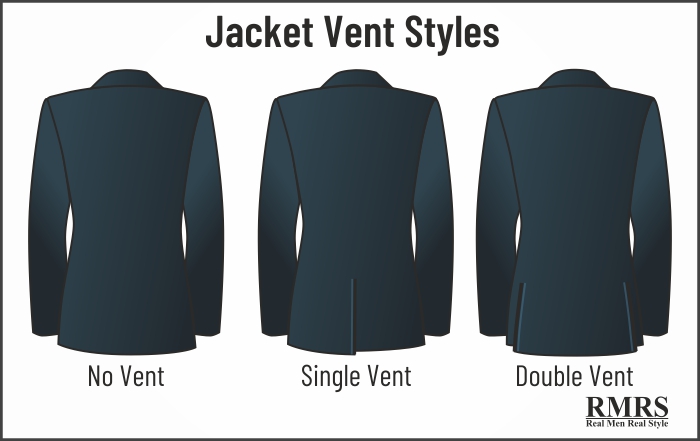
Try to find a double vent whenever possible.
The double is rarer but worth it in my opinion – I just don't like how the single vent shows your ass to everybody.
6. The Double-Breasted Jacket
Since the 1940s and World War 2, single-breasted jackets took the world by storm. Nowadays, 2-button single-breasted coats comprise about 90% of the market. 2.5-button jackets on the other hand (Designed to be worn as a 2-button but with longer lapel fold) make up no more than 7%.
Finally, we have the rarest brand: the double-breasted jacket, making up roughly 2% of jackets available worldwide. This variation comes with anywhere between 4, 6, and 8 buttons on the jacket, along with peaked shawl lapels.
It's also less versatile than its single-breasted cousin, being more formal and thus less suited for jeans. The rarity, along with the extra fabric housing extra buttons, will factor into the cost.
7. Waistcoat Options
Quite frankly, I could dedicate an entire article to men's vests, but it wouldn't be pertinent to the topic at hand.
Vests are nice, but you should treat them like luxuries.
Just know that an additional waistcoat will only add to an already-considerable expense. You won't need one most of the time – especially not for the office.
8. Silk Lining
If you're looking for quality, then “silk” might be a buzzword that sends you running for the register. In men's suits, however, silk is quite impractical.
If your silk lining breaks, then good luck. The entire jacket then needs to be realigned and repaired, and that can cost an arm and a leg.
My recommendation is to stick to Bemberg – high quality and durable. It's essentially a viscose fabric made from wood pulp. The result is a natural lining that can take a punch and save your wallet.
9. Half-Canvas Vs. Full-Canvas
Canvas is material that is packed in between the fabric on the outside and the lining in the interior, usually made from horsehair and cotton.
As the names suggest, half-canvasing covers the upper half of the jacket, while the latter encompasses the whole thing.
The durability of full-canvas jackets shouldn't be underestimated.
At a glance, half-canvas construction seems like the cheaper option, but I recommend paying a little more for full-canvas as it drastically improves the overall durability of the garment.
High quality saves money in the long run.
10. Does The Suit Use Excess Material?
We usually associate “excess” to be a bad thing, but when it comes to men's suits, it's actually a great addition.
Why? Some suits will have extra fabric beneath the hems and seams to allow for expansion of the garment in the event that you gain weight. The problem is that many manufacturers don't include it in order to save money.
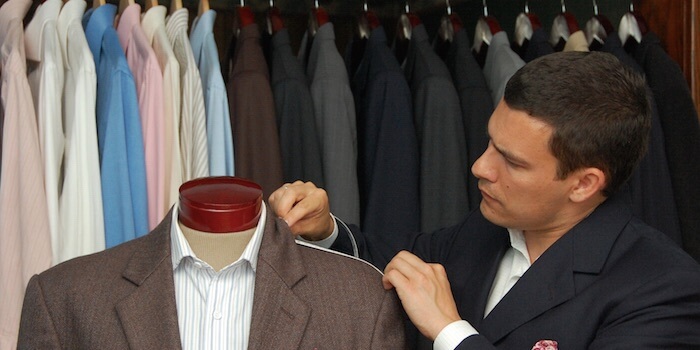
Fit is king, no matter what. It should be your first priority when shopping – and excess fabric gives you some room to maneuver as far as the fabric allows.
it does figure into the cost in the short-term, but if you do gain a few extra pounds (nothing wrong with that), then what would you rather do? Pay a little more to have the jacket expanded, or buy an entirely new garment?
Conclusion
- Knowing Quality Vs. Luxury.
- Bespoke Suits.
- High-Quality Additions.
- Knowledgeable Salespeople.
- The Double Vent.
- Double-breasted Jackets.
- Waistcoat Options.
- Silk Lining.
- Half-Canvas Vs. Full-Canvas.
- Excess Material.
The key thing to take away from this article is that there's a lot of quality to choose from. You just need to pick and choose if certain additions (like horn buttons) are absolutely necessary while gauging the long term investment of your purchase (through full-canvas and Bemberg lining).
This article was brought to you by Spier And Mackay – The best online tailors I know. Their goal is to deliver exceptional value and a great experience to customers. Their suits start at just $328!
It doesn't just stop there, though – they sell everything from suits, to sweaters and trousers. These guys use Italian and English cloth from only the best mills they can find. Want to learn more? Click here to check out Spier And Mackay.
The post TOO Much Quality? 10 Signs You Are Overpaying For Your Suit appeared first on Real Men Real Style.
Related posts:
DMTBeautySpot
via https://www.DMTBeautySpot.com
Antonio, Khareem Sudlow
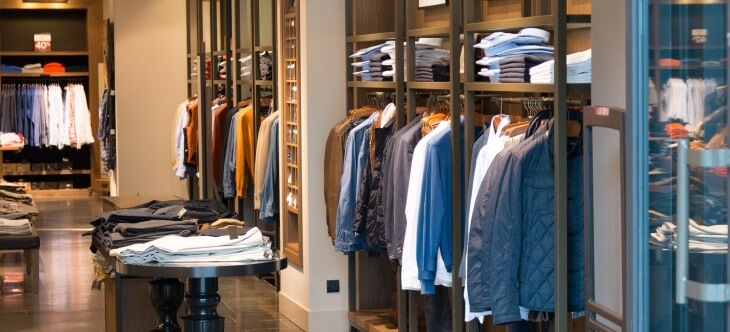
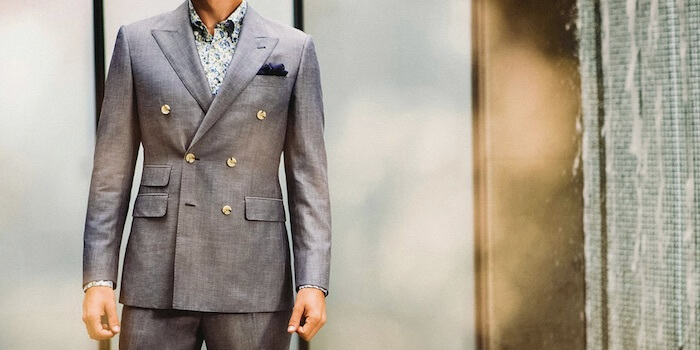
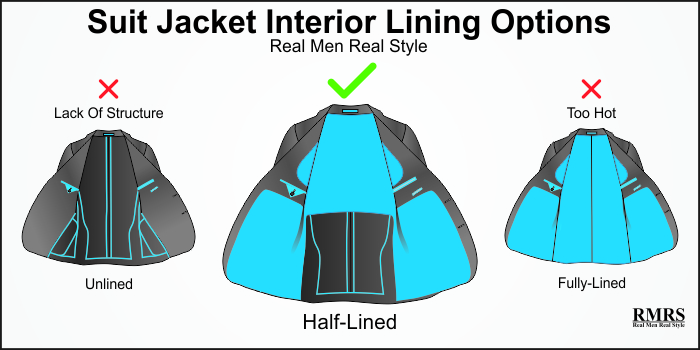
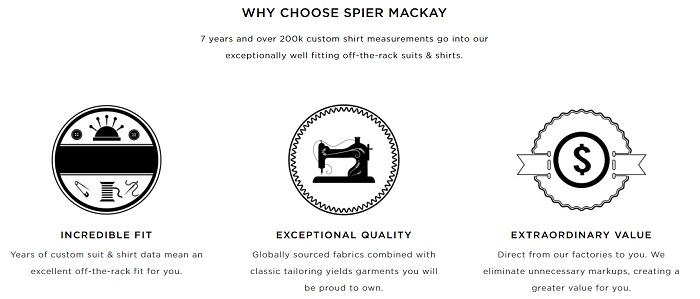


0 comments